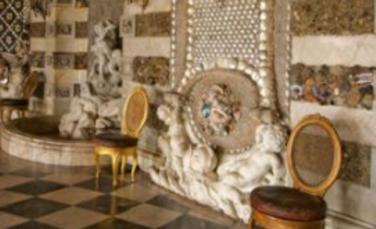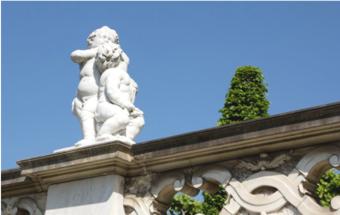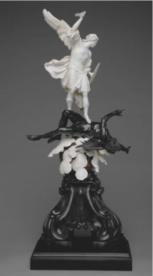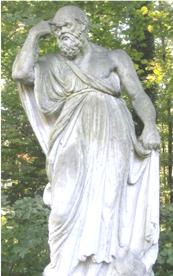
|
Johann
Schnegg (sometimes written Schneck, or Schneeg) was born
near Imst in 1724. He learnt his handicraft in workshops
in the neighbourhood. Then he spent about one year in
Innsbruck in 1747 and went to Bayreuth in 1748 where he
worked for J.G. Ziegler, in charge of the Sculpture
Cabinet of the Margrave of Bayreuth (a brother-in-law of
the Prussian king Frederick II). There Johann Schnegg
married the daughter of his employer and later took over
the workshop of his father-in-law after his death in
1749. For the Hermitage in Bayreuth he produced several monumental
sculptures : Socrates, two groups representing the Rapt
of the Sabines, River Gods for a pool in the gardens. His
original statue of Flora (Goddess of flowers) achieved
in 1755, is now in the Orangerie of the New Castle in
Bayreuth, a copy of it having been raised in the garden.
He achieved also several statues for the Wallfahrtkirche
of Gössweinstein (which became a basilica in
1948), a pilgrim place not very far from Bayreuth. Besides he produced fine furniture and stucco décors for the Court as well. |
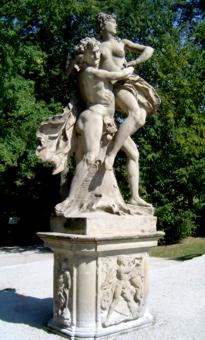
|
